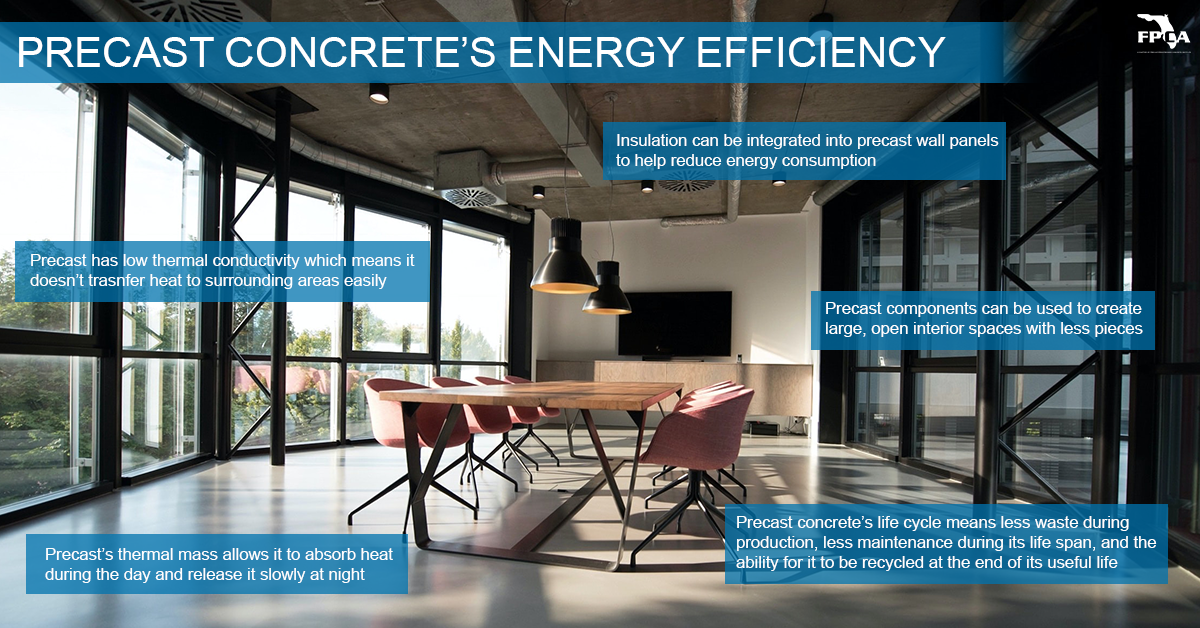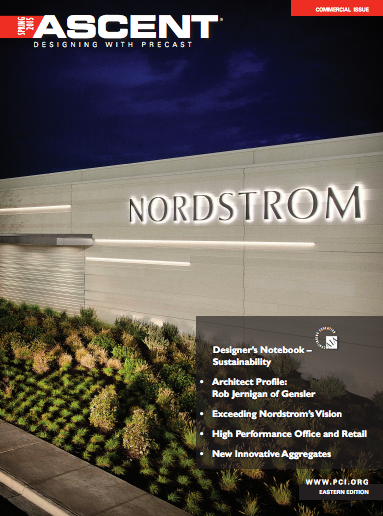Now more than ever resiliency and energy efficiency are at the forefront of designers' and clients' minds when constructing new structures. Precasters are now trying to show how their product is one of the best on the market for providing energy efficiency.
Precast concrete is an energy-efficient construction material that has a low R-value and high thermal mass capability which helps structures achieve higher energy conservation.
Keep reading below to learn the specific ways precast provided energy efficiency and how it can be the perfect solution for your next innovative construction project!
Precast Concrete Energy Efficiency Benefits
Precast concrete can provide the following energy efficiency benefits:
High quality ensures the correct amount of materials are used and mistakes, which result in wasted materials, effort, and money, are avoided
Interior design flexibility means fewer precast components are needed to create larger, open spaces
Green design of precast concrete components takes into consideration the use of local materials, environmental friendly admixtures, and higher durability which increases service life
Thermal Mass
Thermal mass is defined as the property that allows a certain material to absorb heat and then store and later release significant amounts of that heat.
When materials such as precast have the characteristic of needing a lot of heat energy to change their temperature, they are defined as having high thermal mass. Materials such as wood store less heat and release it much faster than precast.
One way to think about the thermal mass of precast is to imagine it was a sponge that soaks up the heat during the day and then slowly releases that heat throughout the night.
One benefit of construction materials with high thermal mass like precast wall panels is that it prevents large fluctuations of the temperature inside a building. This results in improved energy conservation.
Thermal Conductivity and Resistance
Another important characteristic of precast is that it has a low thermal conductivity which is defined as a material's ability to transmit its energy, in this case, heat, through to other surrounding objects. The higher the thermal conductivity of a material, the faster it heats up and the faster that heat spreads to surrounding objects.
Precast has low thermal conductivity, which is expressed as an R-value, because of its density and other factors. This R-value can be further reduced with additions such as insulation.
Energy Consumption
Insulation is an important part of making precast even more energy-efficient for structures such as homes or commercial buildings. Insulation can be integrated directly into a precast concrete element or mounted to precast walls.
Another strategy that helps with energy consumption is having piping and other fixtures embedded into the precast concrete components which results in better thermal behavior.
Life Cycle Management
One less thought of process that also contributes to the precast’s overall energy efficiency is its life cycle. At production, precast is made with resources that are used in the most efficient way possible. Some cement formulas have even been developed to help capture carbon during production further reducing precast’s carbon footprint.
During its life span of actual use, precast generally doesn’t require any maintenance until about 50 years of use. And after a precast building or structure has completed its useful life, the demolition waste of the precast components can be recycled to create new structures.
Precast Energy Efficiency Resources and Publications
PCI’s Designer Notebook on Energy Conservation discusses the benefits of precast concrete in relation to energy conservation, thermal resistance and mass, sandwich wall panels, air barriers, and more.
PCI’s Ascent magazine covered commercial projects that were constructed using high-performance precast concrete components which helped build energy-efficient, branded buildings.
Final Thoughts on Precast’s Energy Efficiency
Design professionals and precasters can take advantage of precast’s energy efficiency to easily create structures that meet clients’ current sustainability and resilience goals. Working together with other trades such as HVAC professionals, precasters can prove how precast can improve a building’s energy performance.




